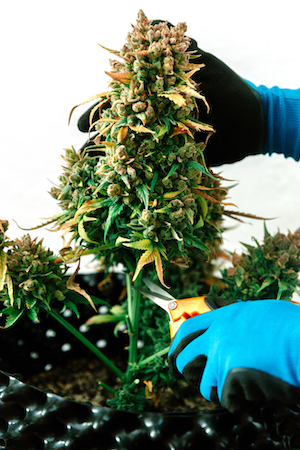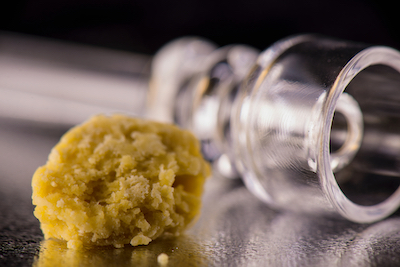Attitudes toward marijuana have changed significantly culturally in the last two decades. People in all age groups and from all backgrounds are becoming more tolerant and accepting of marijuana. When marijuana and THC were legalized in Colorado and Washington, it was a huge story across the country and across the world. Since then, many more states have followed, and every legislative cycle, more states will continue to follow. Where it is legal, cannabis production and cultivation has become a massive industry. In addition to smoking marijuana, the variety of ways that someone can consume THC has exploded. There are many kinds of marijuana extracts that can be smoked—cannabis extracts with names like BHO, shatter, wax, crumble can be vaporized and inhaled. There are countless kinds and types of ways to eat THC-infused candy and other foods. Edibles, dabs, and other concentrates are now very popular and widespread, and they are becoming more so as extraction methods become easier and more accessible. The rising popularity of extracts is occurring not only in states where they are legal, but they are showing up more frequently in Texas as well, where both possession and manufacturing are punishable as felonies.
Both THC Oil and Marijuana Are Still Illegal in Texas
Although the climate has changed politically, culturally, and legally, Texas has remained one of the states that have not shifted their approach to prosecuting marijuana-related offenses. Texas is not a state where marijuana or any kind of cannabis or THC oil is legal. Although some larger cities such as Dallas and Houston have stopped arresting people for possession of small quantities of the marijuana plant, smaller counties still take possession of marijuana very seriously. There is a big difference between possession of marijuana and possession of marijuana extracts, THC and cannabis oils. The penalties differ substantially. Unless there are very large quantities involved, possession of marijuana is a misdemeanor. Possession of any amount of a marijuana extract is a felony. Many people in Texas are surprised and shocked to learn that the penalties for marijuana are substantially different from the penalties for THC oil and cannabis concentrates. This knowledge can be acquired painfully after an arrest for felony possession or distribution.
What Are THC Concentrates?
What exactly is THC oil and how is it different from marijuana? THC is short for tetrahydrocannabinol. THC is a cannabinoid that is the major psychoactive part of the marijuana plant.Through a process known as extraction, cannabis concentrates and THC oils isolate the THC from the plant in a concentrated form. Concentrates greatly increase the potency. While very high-quality marijuana can contain 20% THC content, cannabis concentrates be extremely potent, having as much as 6o% or up to 90% THC content. The process of extracting THC removes all the marijuana leaves and impurities while retaining the cannabinoids and terpenes. Terpenes are oils present in marijuana that interact with cannabinoids to create a psychoactive effect. Researchers are fascinated by terpenes for their health benefits. As outlined above, after extracted the cannabis concentrates can be eaten or they can be smoked or vaporized. THC infused foods can come in an array of different products. There are plenty of candies that contain THC concentrate in them, such as cookies and brownies and gummy bears (more on that below). Cannabis oil can also be vaporized in a pen cartridge or e-cigarette, and can also be vaporized and ingested by dabbing. Another substance with an enhanced amount of THC is called kief. Kief is made by separating the marijuana leaves from the trichomes on the plant. The trichomes are the ultra-fine hair-like glands that protrude out from the marijuana leaves. The trichomes contain a lot of the plant’s cannabinoids and terpenes, and because of that, kief has a powerful, heightened psychoactive effect on users.
What are the Penalties for Possession of Marijuana?
To understand what THC extractions are, it is first important to distinguish what marijuana is. Most people know don’t need a law book or dictionary to tell them that marijuana is a green flowery plant with a pungent unmistakable aroma. However, there is a specific legal definition. The Texas Health and Safety Code defines marijuana. Section 481.002(26) of the Texas Controlled Substances Act defines marijuana as the leaves and seeds of the Cannabis Sativa L. plant, including compounds and mixtures of the seeds and the plant. It also tells us that this legal definition of marijuana does not include the extracted resin of the plant, or the marijuana stalks, oils and cakes derived from marijuana seeds, compounds prepared from oils, cakes, stalks or fibers of the plant, or the sterilized seeds.
The penalties for possession of marijuana are dictated by weight. The penalties for possession span from a Class B misdemeanor to a first-degree felony. Possession of marijuana will be most often charged a misdemeanor. Any amount that is less than two ounces is a Class B misdemeanor, and any amount more than two ounces but less than four ounces is a Class A misdemeanor.More than four ounces becomes a felony. If there is more than four ounces, the penalties become state jail felony level. State jail felony punishment can span between six months and two years in a state jail felony facility. If there is an amount more than five pounds, the penalty becomes a third-degree felony, which can carry a prison sentence between two and ten years. Any amount between fifty and less than two thousand pounds is a second-degree felony. The punishment for a second-degree felony can span anywhere from two and twenty years in prison. Any amount over two thousand pounds can mean a prison sentence of anywhere between five and ninety-nine years. These are only the ranges of punishment, based on weight, for possession of marijuana in Texas. The penalties for delivery, or selling, or possession with intent to deliver are slightly higher than those for simple possession.
What are the Legal Differences Between Marijuana and Concentrated THC?
One crucial difference between marijuana and cannabis concentrates are the stark differences criminal penalties and ranges of punishment for possession and/or delivery. As outlined above, possessing a quantity of marijuana of any amount up to four ounces is still a misdemeanor. Four ounces is a very substantial amount of marijuana for personal use. It is an amount that could not be kept in a jean pocket, unless it is broken up into several smaller bags. Tetrahydrocannabinol, the psychoactive chemical in marijuana, when extracted, is considered a penalty group 2 controlled substance. Possession of THC in any amount, even an amount less than a thimble, is a felony. This is a shocking disparity between the two.
What are the Penalties for Possession of THC in Texas?
How are drugs classified in Texas, or how are the penalties set for one drug or the other? Drugs or controlled substances are classified into four groups with escalating punishments based on a couple of factors. These groups are organized based on the potential for abuse as well as the medical value of the substance. Substances that have the highest potential for abuse and little or no acknowledged value for medical treatment or medical research carry the most stringent penalties. These substances are sorted into penalty group 1, and these are the substances that possession or manufacture and delivery are penalized the hardest. Penalty group I includes notorious drugs such as heroin and cocaine and methamphetamine. THC oil and any substance that contains THC other than marijuana is located into the next group, penalty group 2. Despite being in penalty group 2, THC has a variety of medical treatments and uses, and research into both THC and marijuana continues to uncover new and novel medical uses. THC is controversial, but it is widely utilized to manage pain, and treat conditions such as multiple sclerosis, fibromyalgia, and Parkinson’s. THC is used to help with weight loss and nausea. Despite these medical benefits, and despite shifting attitudes toward marijuana in other states, THC is still in the second most severe penalty group in Texas.
The penalties for possession of THC are determined by quantity, and the quantity is measured in grams. As noted above, possession begins at a state jail felony. Unlike marijuana, there are no misdemeanor levels of punishment for THC. Any amount under one gram is a state jail felony and the penalties increase from there. Possession of an amount of THC above one gram but under four grams is a third-degree felony. Possession of an amount of THC between four grams and four hundred grams is a second-degree felony. Possession of any amount over four hundred grams carries a range of punishment between five and ninety-nine years in the Texas Department of Corrections.
What About Cannabis Edibles?
Edibles are foods that are infused with THC oil. There are many kinds of edibles, and these days most kinds of food can be prepared or purchased with THC. In a state in which marijuana and THC are legal (i.e., not Texas), some dispensaries and stores have as many kinds of food infused with THC as can be imagined. There are candies such as gummy worms, gummy bears, mints, chocolates, hard candy, soft candy. There are all types and kinds of cookies and brownies and cereals and cannabis-infused rice krispie treats. Edibles, of course, are also illegal. Possession of edibles also begins at a felony. And the real punishing aspect to THC edibles is that any other ingredients also add to the weight. All the sugar, flour, eggs, and other ingredients are included. These are called adulterants and dilutants, and they can rapidly escalate the level of the felony charge. A pan of brownies laced with THC can become a first-degree felony. Or a pan of rice krispie treats prepared with cannabis oil can be a first-degree felony. This is a comical distortion of any sense of what is right and just punishment. Generally, those who like to cook marijuana infused rice krispie treats are high school students or college students. This is a frightening prospect for anyone, and most people are sideswiped to find out how serious the charge is.
What About Cannabis Concentrates like Shatter, Crumble, Wax, or Budder?

A cannabis extract is oil that has a very concentrated amount of the marijuana molecular compound THC. There are different ways to extract THC from the plant, but the most popular extraction method involves butane. Butane hash oil is also known as BHO, is created by pulling the cannabinoids and terpenes from the plant using a butane solvent. BHO is a very popular extraction method. It is also known as butane honey oil because of its resulting gold and honey coloring. Other extraction methods involve different solvents such as carbon dioxide, and these are also popular. There are different names for the different kinds of butane hash oils or CO2 extracts, such as budder, sap, wax, crumble, pull-and-snap, honeycomb, or oil. The differences in these extracts have to do mainly with consistency and texture. Moisture, heat, and terpene levels can all affect the texture. Here are the names of popular extracts:
Shatter—this extract comes in smooth and clear sheets that resemble glass or smooth hard candy. Shatter breaks up like glass. Shatter is also sometimes called glass. It is translucent and comes in a golden amber color.
Crumble—this extract gets its name appropriately from its soft texture, and its tendency to easily break or fall apart easily when touched. Crumble is dry. It is drier than other extracts. It can be vaporized, dabbed, rolled into a joint or blunt, or packed into a pipe or a bong.
Wax—unlike shatter, wax is not translucent. It is a soft substance and it is opaque. It is lumpy and formless and looks like earwax. The reason it is opaque has to do with the higher molecular density than shatter, which light cannot penetrate.
Budder—this extract is oily and soft in consistency. It is called budder because of its similarity to butter, and it has the texture of butter. Budder does not break apart in pieces like crumble. The fatty oily consistency makes budder to be used as a kind of spread in joints, blunts. It can also be vaporized or dabbed.
Kief—this is also called dust or pollen or dry sift. It refers to the very small and very sticky crystalline parts that cover the surface of the leaves of the marijuana plant. These particles are resin glands or trichomes that contain high amounts of cannabinoids and terpenes. The trichomes on the marijuana plant evolved as the plant’s form of protection or defense against enemy herbivores.
All of these can be either butane hash oil or CO2 oil. All of these can be vaporized or dabbed. Possession of all of these can result in felonies. Regardless of the consistency, the resulting extract can be very powerful concentrations of THC and are commonly vaporized and used in a dab rig. Not surprising that cannabis extracts are felonies in Texas, and depending on the amount, the charges can range from a state jail felony to a first-degree felony, and this is likewise dependent on weight.
What is Dabbing?
Dabs are highly concentrated amounts of THC. They are extractions of the THC of the marijuana plant using solvents such as butane or CO2. Dabs are heated up and inhaled through a dab rig. A heated surface is used to heat up the dabs, usually a hot nail. The rig uses water to cool the THC vapors prior to inhaling. The process of using a dab rig is called dabbing. Dabbing and smoking dabs has become very popular over the last decade and continues to increase in popularity as extracts become more accessible and more mainstream. The appeal of dabbing comes from its powerful and quick delivery of TCH to the user. Dabs can be great for people suffering from acute pain that are medicating with marijuana. Dabbing can be dangerous. The solvents used to extract the THC are flammable, and explosions or fires can result if proper care is not heeded to. Furthermore, a hit of dab can bring a much heavier dosage than someone is expecting, and this can be overwhelming and debilitating.
What About Vaping with THC Oil?
Vaping has become very popular as an alternative to cigarettes. Vape pens deliver vaporized nicotine directly without all the tar and unwanted chemicals of cigarettes. Vape pens are also used to vaporize cannabis oil and get people high. Pens can come pre-filled with THC oil, and refillable pens sold for nicotine can be filled with cannabis oil as well. Dosing can be a major concern with both rigged vape pens and dabs. Pre-filled vape pens containing THC emit a measured and controlled amount that makes them safer than rigged vape pens or dab rigs, which can deliver very intense and unbridled amounts that can be more than the user bargained for. There are horror stories of people hitting dab rigs so hard that they are incapacitated with huge does of THC. Vape pens are generally battery-powered devices that heat up the cannabis oil and deliver vaporized THC to the user. They are quick and easy. They are small and easy to conceal as well. They are portable and can be carried on a person easily. Because of these reasons, vape pens are desirable and have wide appeal among all age groups, but especially among young people—high school and college students. Like all other charges involving THC oil and cannabis oil, most people that get arrested are shocked to learn that the charge for having a vape pen will likely be a third-degree felony or a second-degree felony.









